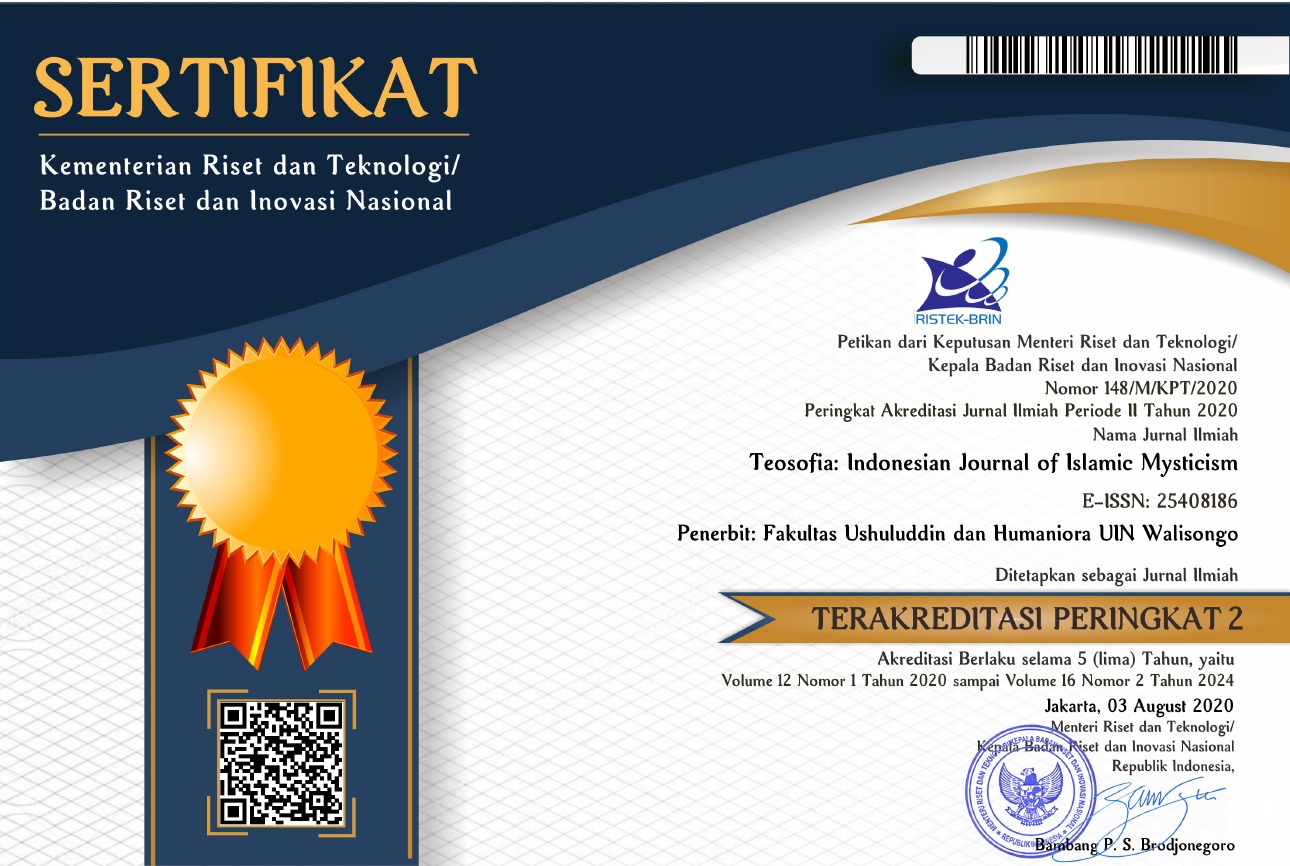ETHICS AND AESTHETIC VALUE OF SILK IN HADITHS
DOI:
https://doi.org/10.21580/tos.v7i2.5029Keywords:
ethics, aesthetics, silk, hadithAbstract
Silk is one of the clothing products produced from the time of the Prophet to the present. But in terms of their use, rules and restrictions appear in the hadith of the Prophet. It seems that it has a message that the Prophet wants to convey to his people. This study aims to find the ethical and aesthetic values of silk in the perspective of the Prophet's hadith. Considering the development of fashion fashions made from silk experience development and sometimes its use is debated. The method used in this research is descriptive qualitative. The findings of this study indicate that the ethical values in the traditions surrounding silk can be grouped into three. First, ethics so that Muslims have a firm identity, not relying on other people. Second, ethics so that Muslims avoid arrogance and overdoing in decorating. Third, ethics cares about social affairs and lives simply. The aesthetic value of silk in the hadith can be seen from a variety of terms that refer to clothing made from silk, namely the recitation of ḥarir, dibâj, qasiy, sundus, istabraq, siyara`. The aesthetic value of the variety of clothing made from silk material during the Prophet's time is the uniqueness and variation of the pronunciation used by the Prophet to describe the shapes and structures of various silk types.
Downloads
References
Ali, Atabik, dan A. Zuhdi Muhdlor. “Kamus Kontemporer Arab Indonesia.” Yogyakarta: Multi Karya Grafika, 2003.
Al-Qazwini, Ahmad bin Faris. “Mu’jam Maqayis Al-Lughah.” Beirut: Dar al-Fikr, 1979.
As-Sa’di, Abdurrahman. Qawa’idul al-Hisan. Beirut: Dar al-Fikr, t.t.
At-Tirmidzi, Muhammad. Sunan al-Tirmidzi. Riyadl: Maktabah al-Ma’arif, 1417.
Bukhari, Abu Abdullah Muhammad. Al-Jami’ al-Shahih. Kairo: al-Mathba’ah as-Salafiyyah, 1400.
Feldman, Edmund Burke. Art as Image and Idea. New Jersey: Prentice Hall, 1967.
Ismail, Syuhudi. Metodologi Penelitian Hadis Nabi. Jakarta: Bulan Bintang, 1992.
Khon, Abdul Majid. Ulumul Hadis. Jakarta: Amzah, 2010.
Mandhur, Ibnu. “Lisan al-‘Arab.” al-Dar al-Misriyyah, t.t.
Muhadjir, Noeng. Metodologi Penelitian Kualitatif Pendekatan Positivistik, Rasionalistik, Phenomenologik, Dan Realisme Metaphisik Telaah Studi Teks dan Penelitian Agama. Yogyakarta: Bayu Indra Grafika, 1998.
Sardila, Vera. “Implementasi Pengembangan Nilai-Nilai Etika dan Estetika Dalam Pembentukan Pola Prilaku Anak Usia Dini.” Jurnal RISALAH 26, no. 2 (Juni 2015): 86–93.
Shihab, Quraish. Wawasan Al-Qur’an. Jakarta: Mizan, 2007.
Suharso, dan Ana Retnoningsih. “Kamus Besar Bahasa Indonesia.” Semarang: Widya Karya, 2005.
Syamsuddin, Muhammad. “Eksistensi Manusia menurut K.H. Ahmad Azhar Basyir.” Sosio Religia Jurnal Ilmu Agama dan Ilmu Sosial 4, no. November (2004): 131–47.
Umar, Ahmad Mukhtar. Dalam Mu’jam al-Lughah al-‘Arabiyyah al-Mu’ashirah. Kairo: Alam al-Kutub, 2008.
Yunus, Pangeran Paita, Soedarsono, dan SP Gustami. “Unsur Estetika Islam Pada Seni Hias Istana Raja Bugis.” Jurnal Al-Ulum 12, no. 1 (Juni 2012): 35–52.
Published
How to Cite
Issue
Section
License
Copyright
The copyright of the received article shall be assigned to the journal as the publisher of the journal. The intended copyright includes the right to publish the article in various forms (including reprints). The journal maintains the publishing rights to the published articles. Therefore, the author must submit a statement of the Copyright Transfer Agreement.*)
Licensing

This work is licensed under a Creative Commons Attribution-ShareAlike 4.0 International License.
In line with the license, authors are allowed to share and adapt the material. In addition, the material must be given appropriate credit, provided with a link to the license, and indicated if changes were made. If authors remix, transform or build upon the material, authors must distribute their contributions under the same license as the original.
_______
*) Authors whose articles are accepted for publication will receive confirmation via email and send a Copyright Transfer Agreement.









